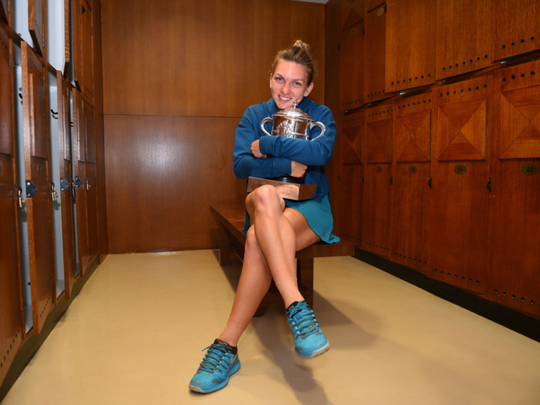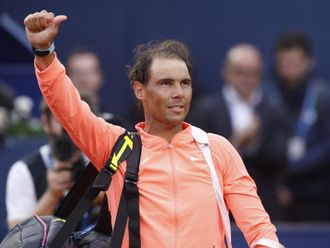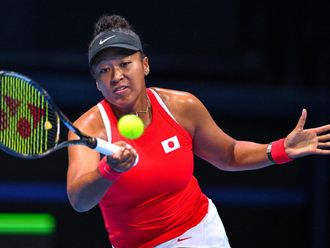
Paris: The rather tortured global odyssey of No. 1 ranked Simona Halep finally wound its way on Saturday to a patch of clay just behind a Roland Garros baseline, where the small Romanian with the big guts dropped her racket and stood amazed, hands on forehead. By the second when Sloane Stephens’s last service-return bid had fluttered rightward and struck the net, Halep had freed herself from goblins loitering from three prior Grand Slam finals that went both long and glum.
Beyond even that, Halep’s 3-6, 6-4, 6-1 win in the French Open women’s final against the blazing American, a match full of long rallies and long, long rallies, had forced Halep to stare at fresh goblins. As Stephens looked airtight through a first-set win and a 2-0 lead in the second, and as the day began to look like a towering reinforcement of Stephens’s 2017 US Open title, Halep came across a novel tactic.
She decided she had lost, that another chance had fizzled.
“I did, yes,” she said. “I felt that and I said, ‘It’s not going to happen again, but it’s OK. I just have to play.’ And then when I started to win games, I said that last year, I said that last year happened to me, same thing, I was set and a break up and I lost the match. So I said there is a chance to come back and win it. So I believed in that, and my game was more relaxed.”
Old-fashioned pessimism had struck again, mixed with the maturity of accepting a non-existent defeat, even given the fear of the news-conference questions of which she would say, “Honestly, that was the toughest thing.” Her shots began to take on more height and depth while Stephens’s replies began to exhibit more fatigue and error.
Within moments, Halep had won 15 of 18 points. By the end, she had won 12 of the last 15 games. Near the end of that, she had felt unable to breathe in some final moments alongside the last, stirring ghosts from her losses in the 2014 French Open (to Maria Sharapova, in three sets), in the 2017 French Open (to upstart Jelena Ostapenko, in three sets and uncommon anguish) and in the 2018 Australian Open (to Caroline Wozniacki, in three sets and the respect-winning detail of having to undergo treatment for dehydration after the match).
And by the end of that, when she reminded herself to go point by point because the ruthless tennis life had taught her that, she had reduced Stephens’s sterling record in WTA Tour finals to 6-1.
And then by the end of that, humans around the world, none unbeaten in life, felt happy for her.
Those included the 22 million Romanians, hailing from a country of Ilie Nastase and Nadia Comaneci and more, yet a country where, at the moment, all the big sports pressure heaps upon Halep. Those included the many Romanians who made Court Philippe Chatrier feel like a Romanian village, with their Romanian flags and their chants of “Simona! Simona! Simona!”
Those included even Stephens, who has vaulted from No. 957 last early August, post-injury, to No. 4 this coming Monday, and whose statements included, “She raised her game, raised her level,” and how “the better player won the match today,” as well as “no one else in the world I’d rather lose to,” and, “It’s a beautiful thing, very special.”
Even as she stood already at No. 1, everything had changed. That exhausted question about having a No. 1 player who hasn’t won a major had vanished with the ghosts. “All finished,” she said at the media room while posing with the trophy.
“It’s my favourite city, actually, romantic city,” she said of Paris, where she won the junior title 10 years ago. She concluded that her fondness for Paris means, “So I’m really happy that I didn’t win Melbourne, actually, and happened here.”
Everyone laughed. And she looked at the trophy sitting in front of her and said: “It’s heavy. It’s beautiful. And always when I was seeing the pictures with it, I dreamed to have it, to touch it ...”
— The Washington Post












